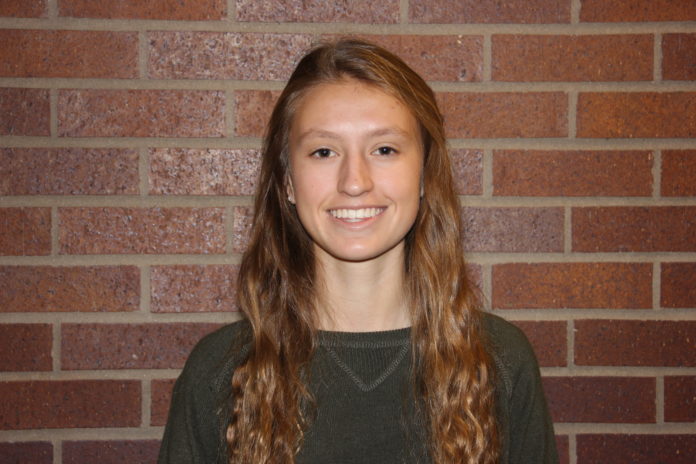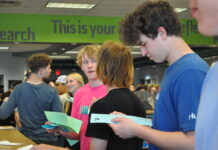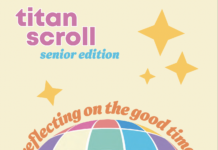In popular media, gifted children are often portrayed as know-it-all children who do not know how to socialize. In reality, the Missouri Department of Elementary and Secondary Education (DESE) defines gifted students as those who need more challenging scholastic settings in order to continue to learn.
Misrepresentation in media often leaves students, like Junior Natalie Hodson, confused when they are designated as gifted.
“I had never really thought of being gifted. I just did my schoolwork. I mean, I was in second grade. It’s not like I was really excelling more than anyone else in my class or anything,” Hodson said.
Fortunately for these students, LSR7 has a gifted program where they can continue to learn and understand what being gifted means. The program is made up of two parts: AIM (Achieve, Imagine, Motivate) is for kindergarteners through third grades and ASPIRE (Achieving Student Potential in Reaching and Expanding) is for fourth through sixth graders.
Senior Emma Costello was first a part of the gifted program as a kindergartener in the Raytown School District and was then automatically accepted into AIM when she transferred school districts in second grade. She learned many things in the program but the lessons mostly revolved around students’ abilities to solve problems on their own.
“It was very different than school because you’re not taught anything, they’re trying to get you to do it yourself,” Costello said.
One main goal of the gifted program in the Lee’s Summit School District is to expose students to new ways of thinking by teaching them how to work through problems with only small amounts of guidance. Since AIM and ASPIRE focus more on teaching concepts behind learning, the lessons continue to help students once they are in high school.
“We didn’t do math, we didn’t do science, but we did work on those problem solving skills and it just helped me think of things in a different way,” Hodson said.
Besides teaching students how to solve problems on their own, AIM and ASPIRE teach gifted students how to function in the real world. For freshman Cassidy Gann, the gifted program helped her become more comfortable in front of others.
“When I was in elementary school, I was really, really shy, so giving those presentations and stuff helped me come out of my shell, so, now when I’m in high school, making presentations… it’s easier,” Gann said.
Often, AIM and ASPIRE teach gifted students how to perform better in both scholastic settings and the real world by exposing them to unconventional tasks. One of Costello’s favorite memories in ASPIRE was learning about how Michelangelo painted the ceiling of the Sistine Chapel during a unit on the Renaissance.
“They had us lay on our backs and put a paper up on a table and we had to paint upside down and it was so hard,” Costello said. “But they wanted us to get a feel for what [Michelangelo] did and I don’t know how he did it, it was incredible. Mine was really bad.”
During lessons like these, the gifted students believed that they were just having fun, not actually learning anything. However, when they reflect on the lessons, students realize just how much they prepared them for higher-level education.
“What we learned there was harder, obviously, than what we learned in class, so it helped challenge me like high school challenges me,” Gann said.
Another benefit of the gifted program is that it taught students to develop relationships that were slightly outside of their comfort zone.
“It wasn’t just your grade, it was a bunch of people from your school that you got to work with everyday and kind of see how they thought and how their minds worked and you got to work together to just be amazing at everything you did,” Hodson said.
However the gifted program does have its downfalls. It teaches students to use creative problem solving which it not always the best option in high school.
“I think most of ASPIRE was positive but sometimes it might be kind of negative to think outside the box because you can be so creative that it causes you to not hit the marks of an assignment,” Costello said.
Additionally, students miss their “normal” classes a couple times each week which causes other students to treat them differently.
“When kids would come up and be like ‘oh, you’re in ASPIRE’ it made me feel like I didn’t want to be in it just so I could be normal,” Hodson said.
Despite the few downfalls of the program, students tend to reflect on the positive parts of of the gifted program once they’re in high school. Looking back on their time in AIM/ASPIRE, Costello, Hodson, and Gann all would advise students currently in the gifted program to enjoy the time they have left with it.
“Just stick with it,” Hodson said. “It’s gonna be a great memory when you leave and you’re gonna want to go back to that. Because once you’re in middle school and high school, there’s nothing there for you. So, just cherish it and realize you are in there for a reason.”
National Association for Gifted Children/NAGC-http://www.nagc.org/
Missouri Department of Elementary and Secondary Education, Gifted Education-
Gifted Association of Missouri/GAM-http://www.mogam.org/home.html
LSR-7 Gifted Programs-https://sites.google.com/a/lsr7.net/lsr7—gifted-programs/ or http://elementary.lsr7.org/gifted-program/














